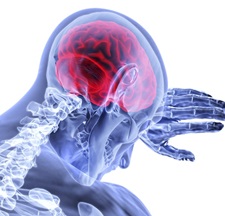 People with conditions or habits like high blood pressure, atrial fibrillation and smoking not only have a higher risk of stroke, but may also have more severe strokes, than people without these risk factors. That is according to a study published recently in an online issue of the journal Neurology.
People with conditions or habits like high blood pressure, atrial fibrillation and smoking not only have a higher risk of stroke, but may also have more severe strokes, than people without these risk factors. That is according to a study published recently in an online issue of the journal Neurology.
“Stroke can lead to disability or even death, yet there are a number of risk factors that people can modify with a change in lifestyle or medication,” said study author Catriona Reddin (University of Galway, Galway, Ireland), who is also a member of the American Academy of Neurology (AAN). “Our results emphasise the importance of managing risk factors for stroke—especially high blood pressure, atrial fibrillation and smoking—in order to prevent severe, disabling stroke.”
The study involved 26,948 people from 32 countries with an average age of 62 years. Of this group, half had a stroke and half were people who did not have a stroke. Participants in both groups were matched to account for age and sex.
Of those with stroke, 4,848 people had a severe stroke and 8,612 people had a mild-to-moderate stroke. Severe stroke was defined as outcomes ranging from being unable to walk or care for oneself without assistance, to requiring constant nursing care, to death. Mild-to-moderate stroke was defined as outcomes ranging from having no symptoms, to requiring some help with personal care but being able to walk without the assistance of another person.
Researchers determined the following stroke risk factors for each person: blood pressure higher than 140/90mmHg; atrial fibrillation; diabetes; high cholesterol; smoking; alcohol use; diet quality; physical inactivity; psychological and social stress; and excess body fat around the waist called waist-to-hip ratio. They compared how important risk factors were for severe stroke and mild-to-moderate stroke to people who did not have a stroke. The researchers also compared how important risk factors were in those with stroke only, where people with a severe stroke were matched with and compared to people with a mild-to-severe stroke.
A total of 74% of those with severe stroke had high blood pressure, compared to 72% of those with mild-to-moderate stroke. For atrial fibrillation, 11% of those with severe stroke had the condition, compared to 9% of those with mild-to-moderate stroke. And, in both groups, 30% were current smokers.
After adjusting for age, sex, country and type of stroke, the researchers found that people with high blood pressure were 3.2 times more likely to have a severe stroke and 2.9 times more likely to have a mild-to-moderate stroke than people without high blood pressure. In addition, they found people with atrial fibrillation to be 4.7 times more likely to have severe stroke and 3.6 times more likely to have mild-to-moderate stroke than people without atrial fibrillation. The researchers also found people who smoked were 1.9 times more likely to have severe stroke and 1.7 times more likely to have mild-to-moderate stroke than people who were not current smokers.
“Our findings emphasise the importance of controlling high blood pressure, which is the most important modifiable risk factor for stroke globally,” Reddin commented. “This is particularly relevant for lower- and middle-income countries that have rapidly increasing rates of high blood pressure and strokes at younger ages.”
A limitation of the study was that some factors that may contribute to stroke severity were not measured, according to the researchers. For example, Reddin noted that smoking is associated with factors like cancer and chronic obstructive pulmonary disease, which may also contribute to increased stroke severity.









